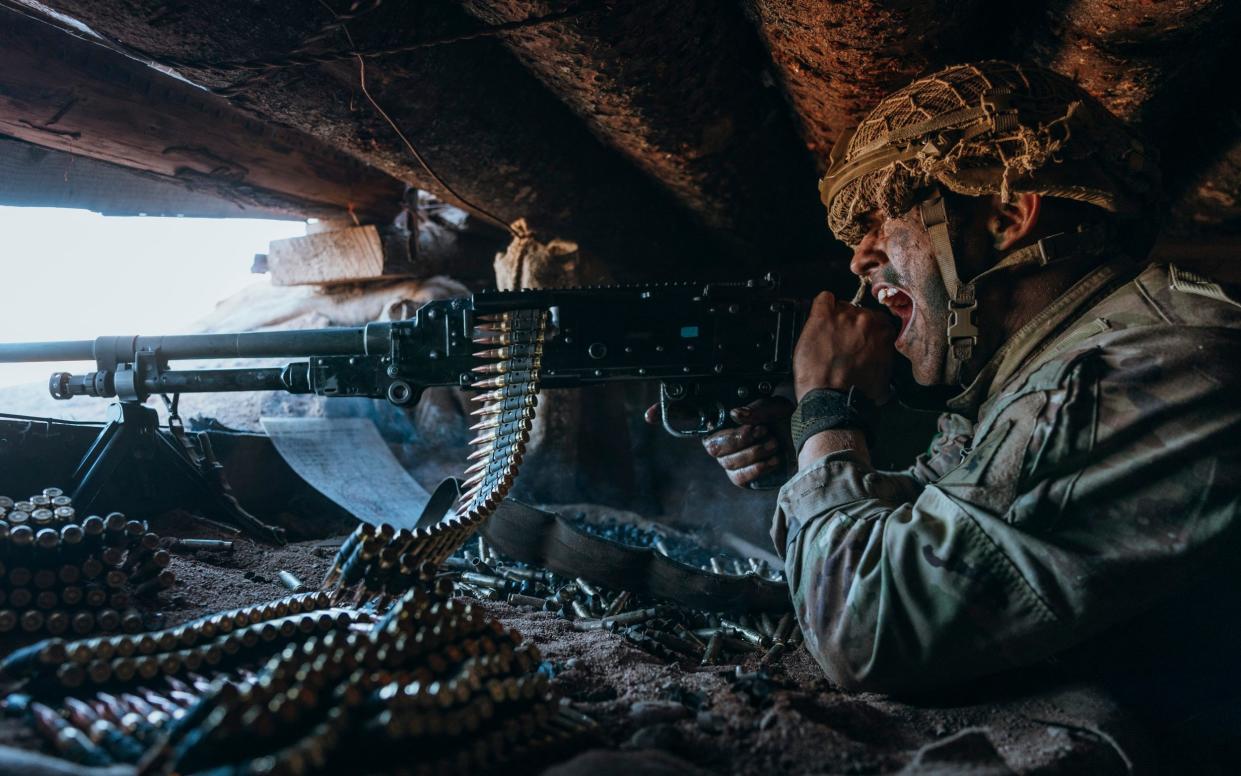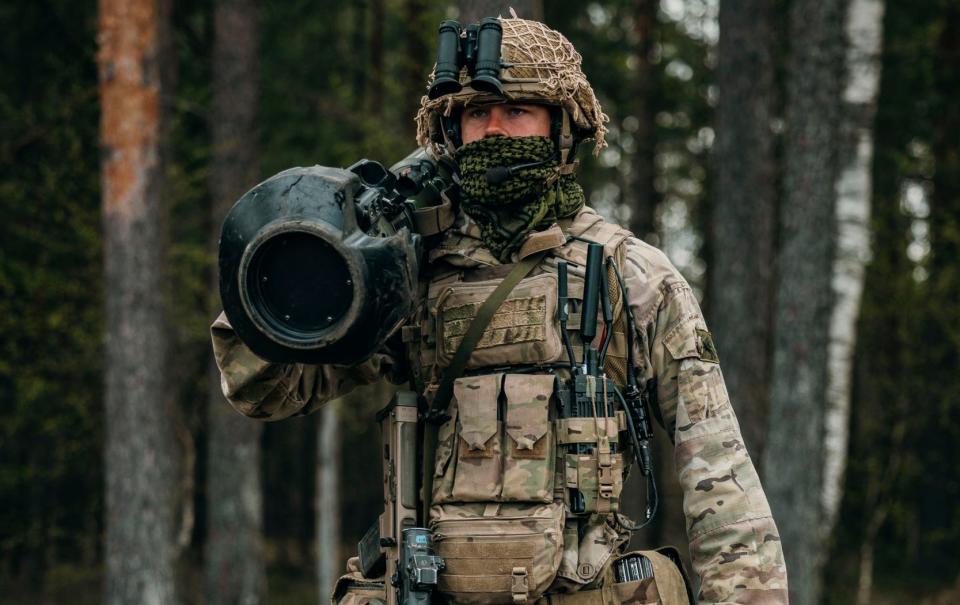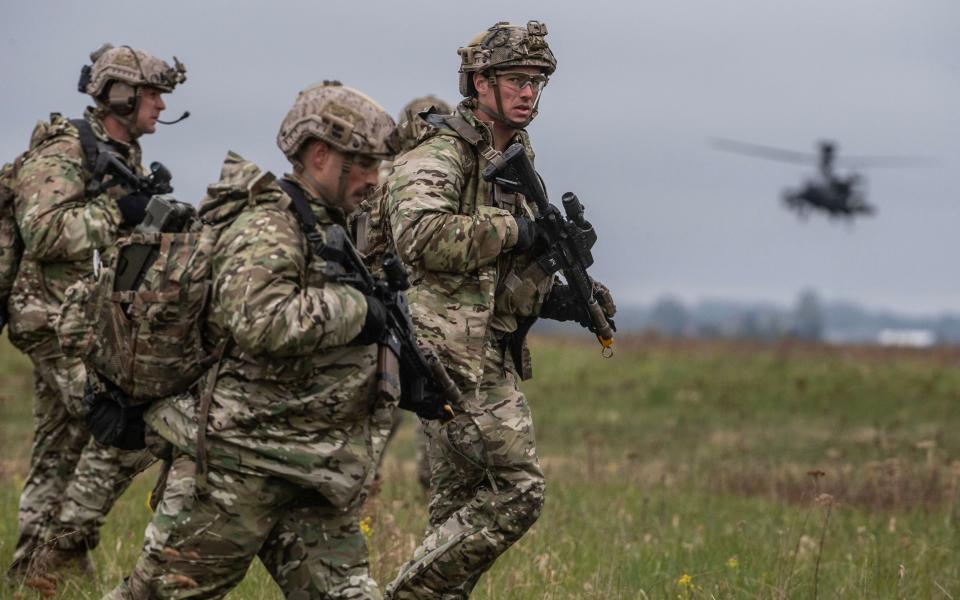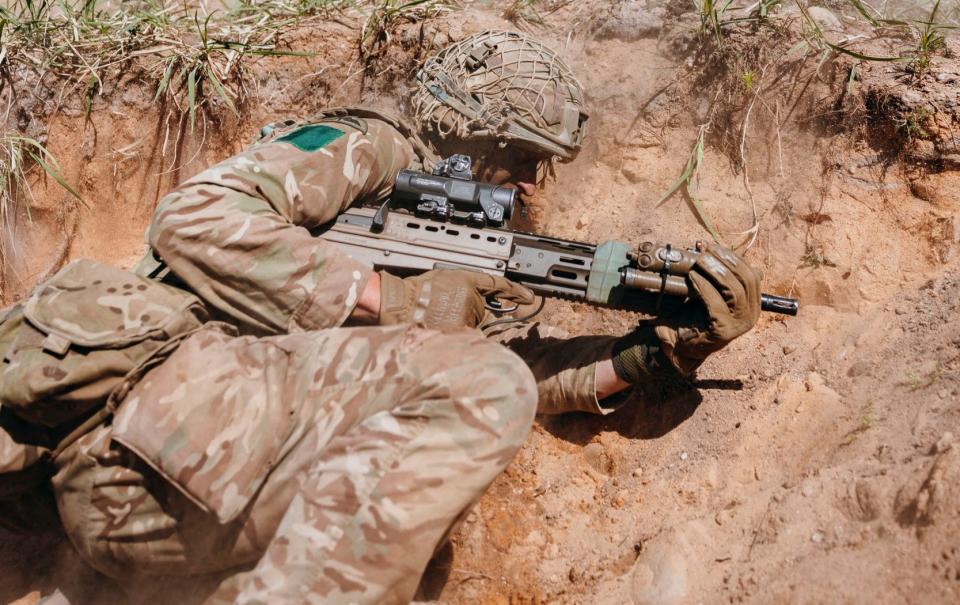On the ‘front line’ as British paratroopers take on imaginary Russian forces

The pair of Britain’s newest Apache attack helicopters hover 40ft above the ground, their guns trained on the dense woods.
Beneath them, assault troops from the Parachute Regiment and the US Airborne Division steal into the trees.
They are quickly met by deafening explosions, machine gun fire and thick grey smoke.
The woods are being “contested”, meaning the Paras and their American comrades have a fight on their hands.
This is what the start of the Third World War looks like – at least according to Nato planners, who are overseeing the alliance’s biggest exercise since the end of the Cold War.
We are just over an hour’s drive from Estonia’s eastern border, and the “enemy” in the mock attack, as part of operation Swift Response, is, of course, Russia.
In preparing for what until relatively recently was unthinkable – a land invasion of a Nato member – senior officers are having to work out how they could stop a potentially overwhelming Russian advance.
The answer, if Friday’s exercise is anything to go by, is a highly aggressive but sophisticated counter-attack that buys the Western allies breathing space to rally more troops.


“We have to remember that we’re an alliance of 32, shortly to become 33, members,” said Brigadier Giles Harris, commander of Britain’s permanent military presence in Estonia.
“This is about prevailing in the first fight to buy time and space for the whole alliance to bring its force to bear.
“I think, ultimately, the numbers work out. It’s about making sure that that first fight is won.”
The new AH-64E Apaches are a key element in the strategy. With “vastly improved” flying performance, sensors and communications, the aircraft can sit outside or above a visibly challenging area, like the thick Estonian forests. They can identify enemy positions and armour that are invisible to the naked eye, destroy them or direct ground troops to do so.
They are also a potent weapon in taking out air defence systems, crucial in the preparation of landing air assault troops, either by parachute or Chinook.
Although based in the UK, 16 Air Assault Brigade can be ready to deploy to Estonia within two days to support the British-led permanent Nato enhanced Forward Presence Battlegroup.
They are, as one military source put it, the “break-glass-in-case-of-emergency” brigade.
Brigadier Mark Berry, commander of the brigade’s combat team, said: “Parachuting allows us to project force very rapidly, so it’s as relevant today as it ever has been and particularly relevant in the context of a Russian invasion.”
That initial airborne assault is intended to create space for more heavily equipped troops to enter the fray.
One such unit also exercising on the bleak planes of central Estonia on Friday were the Royal Irish Regiment, equipped with the Foxhound mounted infantry vehicles that can be delivered into the warzone by heavy-lift aircraft.
Highly manoeuvrable, the Foxhounds are designed to give soldiers the ability to conduct reconnaissance behind enemy lines if necessary.
Major Matt Hazlett, from Belfast, commands the 40 vehicles and about 130 soldiers of Ranger Company.
“The Russians will have to think twice about fighting the Royal Irish Regiment,” he grinned.
“They’ll be more scared than we are.”

Captain Charlie Watson, stands outside the woods wearing the distinctive air assault beret, his blood type stitched into his body armour and an SA80-A3 slung over his shoulder.
He typically carries 180 rounds of ammunition into action – six magazines.
However, if he’s having to use any of them personally, he says, “something’s probably going wrong”?
That is because Captain Watson is a fire support team commander.
Leading a team of five other observers embedded within the first-wave troops, his job is to call in ordnance from a menu of options as diverse as close-range mortars and traditional artillery shells, to air strikes and missiles launched from more than 50 miles away.
“To do that you have to be close enough to the fighting to know where the ordnance is needed,” he said.
That means parachuting with the rest of them.
“If the enemy knows you’re coming, that means the first thing you do when you hit the ground is get your rifle ready. You might have to start fighting immediately.”
The exercise took place after Vladimir Putin warned the West of a global conflict at Russia’s bombastic Victory Day Parade.
The British Army’s commitment to Estonia began in its current form in 2017.
But it was Russia’s full-scale invasion of Ukraine in 2022 that brought their task truly into focus, a fact reflected in the scale of Swift Response: roughly 13,000 personnel from 17 nations.
“I think the sense of purpose probably changed in the soldiers’ minds,” said Brigadier Harris.
“The sense of strategic purpose and the context in which we’re doing this training has definitely changed.
“The fact that we’re so close to Russia also brings it home.”

 Yahoo News
Yahoo News 
